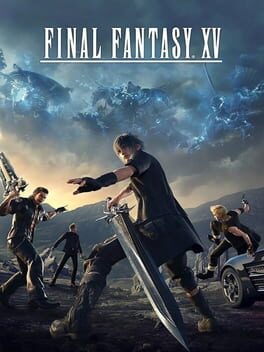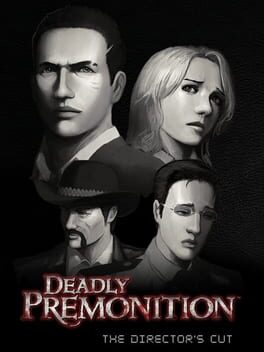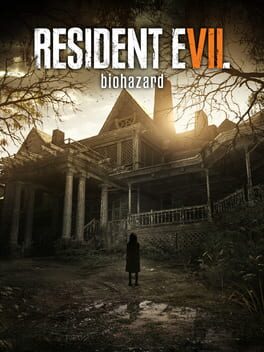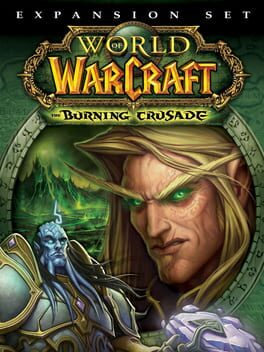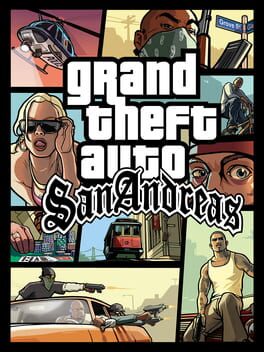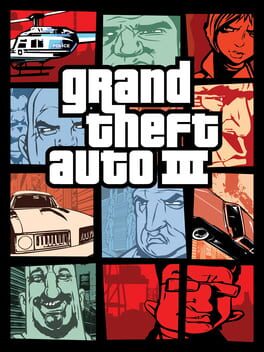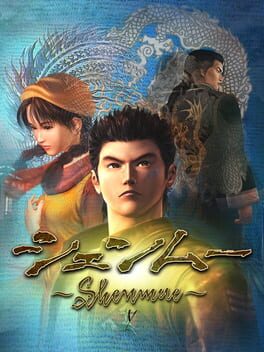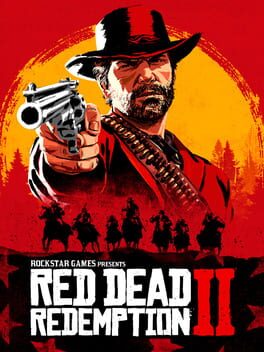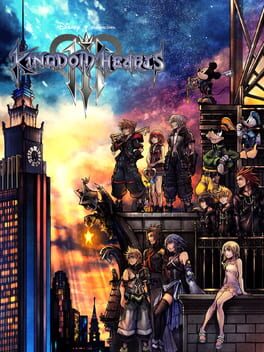2016
Pulls the unthinkable in a Final Fantasy game in relegating the world narrative and all its spectacular cutscenes to radio chatter, to things happening beyond the horizon. What we do does not matter: this is the eternal road trip before the end of the world. The camping and sleeping mechanics enforce a camaraderie that matches that of the Dragon Quest series, while the save mechanic, requiring us to look through photographs taken by an in-game character before bed, sentimentalises things even further, and even works as a testament to freedom in emergence. In this world where time does not move, where we repeat the same routines, the photograph is evidence of life's infinite difference, of the world always becoming other. The way we are pressured into relinquishing agency so another in-game character can drive us places is also fascinating for the way it underscores the negotiation of human and nonhuman actants in gaming generally. Mostly it's in service of the game's sweet eternity, a gentle melancholy that renders every settlement a pit stop, a Route 66 simulacrum where the landscape's littered by ghost towns that, oddly enough, look more alive than these ones.
The 'closed' half is the most fatalistic these things have ever been. Genuinely upsetting stuff.
The 'closed' half is the most fatalistic these things have ever been. Genuinely upsetting stuff.
It was steering the car far too wide and checking the time to fit someone's schedule and going for the map but then realising I would soon be out of gas, and that there are only a finite number of cars that I can run until they run out of gas, and that there's not enough time in the day to walk everywhere, and then crashing into a tree, that this game broke my brain and changed my life. There is nothing in games more willingly maddening and eccentric as this. We like to laugh at it, and we should, but there's something scary and just unknowable in its total derangement.
Has a totally unbearable physicality, which is well suited to the format of the return trip 'home'. Resident Evil 7 draws on Tobe Hooper's monstrous families, tempering the blunt force trauma of Texas Chain Saw Massacre with the camp theatrics of its sequel (as well as Eaten Alive, Funhouse). Jack as patriarch welcomes us to the family as his 'son' and for as long as Jack's around, playing dad, we're returned to a kind of infantile paranoia. Things knock upstairs, others rattle against the windows or roof, and to open the door is to build the courage to peer down and look for the monster under the bed. Jack stomps and rages and throws tantrums so we can always see or hear him, but the very presence of Jack turns the Baker house into the site of one's haunted childhood. Then finally, stepping out from his shadow, we burst from the house, and turning around reality sets in. It was trees and creaky floorboards all along. From here it's an action game. A good action game, but these four stars are all for that first act.
The finest art direction of any fantasy game: trippy but seamlessly so, like it all came together the only way it could. WoW's clunky physicality just pops with warped perspectives and spaces that seem to expand beyond the game container, cued exactly for when it knows you're breathless. The Fel Reaver, a giant that wanders the doom metal concept art of Hellfire Peninsula, is an all-timer. At a distance it moves with the eerie grace of one of Team Ico's colossi, evoking a similar loneliness (just here, it wanders eternally in space). But to forget about the Fell Reaver is to have the ground tremble and everybody else flee, and to have that inhuman loneliness shot through with fear of that which is beyond oneself. The Fel Reaver has a heart, but it does not beat for us. I wonder what it is looking for?
Not yet at the stage where in-game GPS can be used as a crutch for overly dense or visually monotonous levelling, the world design of San Andreas is all interconnected backstreets and shortcuts, and the artful use of colour and texture to suggest interest or to assist the player in building a mental map of all the landmarks across San Andreas' diverse city. To move through it is to learn it intimately, to belong in it, and to read the space and know which escape route to follow under which circumstances. Every backyard and park and underbridge. The missions carefully ripple out from Grove St, introducing new territories bit by bit, such that the player is still able to connect familiar signs and buildings with new vistas, like stars to a navigator.
Then when it suddenly all becomes too much, the story goes that it's too much too. We're miles away in the country and it's night time and the spaces are far too open and now we're lost because we're in exile. CJ cannot go home. The intricate network of passageways that constitutes Los Santos (where it's always better to move by foot or bicycle) is replaced with bare hills and long, straight highways leading to new nowheres. That which once took hours on foot because it was bustling with life takes minutes by car, and the human textures of the world are lost to a shiny sameness that actively works to deflect player interest. The passage from Grove St is to the Desert of the Real, its veins running cold and efficient with the anonymity of hyperspace.
The emptiness of much of San Andreas outside of Los Santos is testament to its overambition, but this works well for its narrative where CJ must return from the desert back home. It also gives the landscape an air of mystery that has to be actively filled by player imagination, hence the accumulation of community myths concerning ghosts, cryptids, angels, and parallel dimensions. GTA V would attempt to tap into some of these narratives in order to control them, but in San Andreas it's the organic byproduct of players, glitches, and weird landscapes. It's the perfect synthesis of broken and polished gameplay and features, and because of its homely details and manic scope, still one of the biggest feeling games there is.
Then when it suddenly all becomes too much, the story goes that it's too much too. We're miles away in the country and it's night time and the spaces are far too open and now we're lost because we're in exile. CJ cannot go home. The intricate network of passageways that constitutes Los Santos (where it's always better to move by foot or bicycle) is replaced with bare hills and long, straight highways leading to new nowheres. That which once took hours on foot because it was bustling with life takes minutes by car, and the human textures of the world are lost to a shiny sameness that actively works to deflect player interest. The passage from Grove St is to the Desert of the Real, its veins running cold and efficient with the anonymity of hyperspace.
The emptiness of much of San Andreas outside of Los Santos is testament to its overambition, but this works well for its narrative where CJ must return from the desert back home. It also gives the landscape an air of mystery that has to be actively filled by player imagination, hence the accumulation of community myths concerning ghosts, cryptids, angels, and parallel dimensions. GTA V would attempt to tap into some of these narratives in order to control them, but in San Andreas it's the organic byproduct of players, glitches, and weird landscapes. It's the perfect synthesis of broken and polished gameplay and features, and because of its homely details and manic scope, still one of the biggest feeling games there is.
2001
From Claude's scrunched up face to his black jacket and weird green pants and the water that churns the colour of concrete, there is a heaviness to Grand Theft Auto III that more serious entries (IV) never matched. But there's also a brutal clarity to the space, where we are always able to see objects in relation to one another, and where collisions seem active instead of incidental. It's just a genuinely explosive game, from the way it looks to the way it controls. I heard someone say it's the purest of the series, and it's also one of the purest games. Where it lacks in atmospheric effects its distinctive grime textures carry the weight of the whole city, and if that's not enough there's the radio permanently tuned to the haunted vibrations of Scientist Rids the World of the Evil Curse of the Vampires.
1999
It's strange that the game that popularised the idea of the open city is so opposed to privileging the player as a free agent. Instead of wandering, we must obsessively micromanage time to fit in with the schedules of Yokosuka's inhabitants. To miss a meeting is to wait for the next day, and to feel every minute of the full duration. Ryo is too young to drink, and even if he wasn't he probably wouldn't drink any way. The setting sun does not herald adventure for us because Ryo has to be home for his mum so he can collect his allowance in the morning. He is strange, and his body moves in a blocky, strange way, which eventually comes to make its themes of alienation and obsession manifest in the way we play Shenmue. To adopt Ryo's body is to absorb his hangups, his estrangement into the process of what is already uncanny: reentering the relic world of Shenmue, and learning to read all of its ghosts.
1997
A pretty bold descent into ecological nihilism in which giving agency to the earth results in the removal of the tumor, that being humankind. Its mysticism is tempered by its weird sense of humour, its severity by its hero's journey, but then its hero's journey by its deanthropocentric revelations. It's funny, and weird, and there's a damp, defeated atmosphere lingering over the entire thing that both draws me in and makes me want to cry. The amount of thought, precision, and poetry in every pre-rendered background is astonishing. If I were to recommend this game to someone else it would be entirely on the basis of this. We're off to save the world again but the world exists in that living room. On that beach. In that hut. And so on.
2001
Artfully hides its linearity and fundamental game-ness by stripping away ornament. The player isn’t told where to go or what to do, and the feeling of anxiety that shadows the illusion of free will remains although there’s only one thing to do, and one way to do it. The process of subtraction extends beyond the game’s mechanics and into its themes and visual language too: that is, the language barrier (who needs dialogue) adds to the feeling of alienation the player feels when experiencing said illusion, and this is set against the bare backdrop of the sublime: the foreboding cliffs and vast landscapes constantly reminding of the relative insignificance of one's struggle for existence. This forced reflection strengthens the game's drive — the feeling of dread when experiencing "the dizziness of freedom" (the push/pull: to jump or not, to turn the system off, etc) becomes insignificant when compared to the responsibility one feels for saving Yorda. Love triumphs, life too.
2004
Removes the visual noise and circular paths from its predecessor and flows like an aqueduct. That it is one of the more linear games of its kind and yet also still feels more expansive than most is a thing of great mystery. Really it just does everything so well. To me it's the perfected rhythms of tension and release, of incentivizing forward momentum through novel affordances (weapons and vehicles), and of pure audiovisual affect: the game knows when to reveal a horizon or a sunset, and when to leave you buried or with the sun fading in the wrong direction, feeling in the shadows trapped and alone.
Red Dead Redemption was a beautiful and depressing game in which an old ghost of the wild west works his way through the other ghosts until there is nothing left. This sequel brings them back to life, which means revising the revisionist western, to what end I am not sure. It is a step back thematically and narratologically, and the first game I've enjoyed that I also hold to be entirely redundant.
It is a feat of open world landscaping but at its heart is an emptiness that is moving when one considers these are all future ghosts. That there never was an Eden.
It is a feat of open world landscaping but at its heart is an emptiness that is moving when one considers these are all future ghosts. That there never was an Eden.
2019
There is thought that the more sluggish a game, the more it pledges itself to cinema, while the more quickly it moves, the more action and spectacle coalesce into a central torrent of 'pure videogame'. Kingdom Hearts III gets closer to this than KH2 where Sora's feet never touched the ground and the linear level design revealed not so much the experience of turbulence as a rush to get to boss fights (where the surprisingly involved action game would begin and end). III ever so slightly tangles the levels to suggest nonlinearity, and offers a consistency of headrush from level movement to the bigger fights, but before long it is clear that it only wants us to get to the end, that there is no interest in the levels beyond their function in the story, that it is all surprisingly empty.
The tragedy is that there is actually a good game in this but that it is all shoehorned into the product that ties the most loose ends. Which reveals a kind of ignorance on the part of the developers — fandom thrives on ambiguity, on unpolished edges, on exchanges left unsaid, and not on what this thinks it's doing.
The tragedy is that there is actually a good game in this but that it is all shoehorned into the product that ties the most loose ends. Which reveals a kind of ignorance on the part of the developers — fandom thrives on ambiguity, on unpolished edges, on exchanges left unsaid, and not on what this thinks it's doing.
CANNOT hold up on a second playthrough and I understand the reservations people have about its blocky, awkward storytelling, but I think everyone's aim is off. Good narrative in a game doesn't mean 10+ hours of self-serious cut scenes, and should extend to how the 'story' is delivered via play as well. And that's the thing: holy hell does this thing play like blood and pain and laughter all at once. It's not as tight as the first one, but that was a linear corridor of simplistic AI and repetitive beefcake chokeholds — a consciously retro angle on the action genre — where this is an accelerating mess of burned bridges and pointless anger, in short, the ideal sequel whatever way you look at it. The Polygon review is right when it argues this says nothing beyond the standard revenge text (that revenge is empty) and that the first game fit into a time along with Spec Ops and Hotline Miami where reflexively implicating the player in game violence was en vogue. But where that reviewer is happy to dismiss this sequel on those grounds as well as, implicitly, the revenge format in general, a more generous reading of this game is due. Yes, of course, it's dumb, and yes, horrifically violent, and so but great, but let's return to how and why the procedural logic of the game bears on the player, and what this means in terms of level and AI design that in fact works to consciously thwart their sense of being in control over their actions, in short, to keep them in a state of violent panic. Because in this panic, in this blind rage propelled not by thought but by rapidly accumulating mistakes, this is the game, and this feeling of nervous blood and cackling ecstasy and tears summoned not through cutscenes but by play, this is what cannot be achieved in another medium and this is where criticism needs to be directed.
2019
I was thinking, trudging joylessly over wet rocks through glacial streams, my controller making the sounds of a crying baby, that no game has ever made me feel this way before — this sad, of course, but this peculiar mix of weary and curious, of wanting to do something despite the crushing futility of it all. Kojima's bizarrely over-engineered menus and mundane mechanics are so expertly deployed to elicit exactly this paradox, it is no wonder the game is so divisive. The game-ness of the game is turned against you so as to add experiential weight to its surface thematics. And so continuing on this line of thinking no game has done this before (besides Shenmue), made its sadness manifest so physically in the body of the player. I came to realise no film or book or piece of music has either, and so maybe, just maybe this is a big deal. If we are looking to art to make sense of the moment of our own extinction event, then I can think of no better work than Death Stranding to thicken time, to underscore the heavy intensity of the world beyond the human, to remind us that a single rock could be the difference between the end of the world and another tomorrow.
2017
The gorgeous movement animations present the cybernetic body as both fluid and brittle; the frame rate chops and it almost looks as though pixels are falling off with every violent act. The player and machine come together and collapse again in a swarm of noise. Within minutes it has more to say about apocalypticism and speculative futures, networked subjectivity, and the materiality of digital memory than any book I've ever come across.
